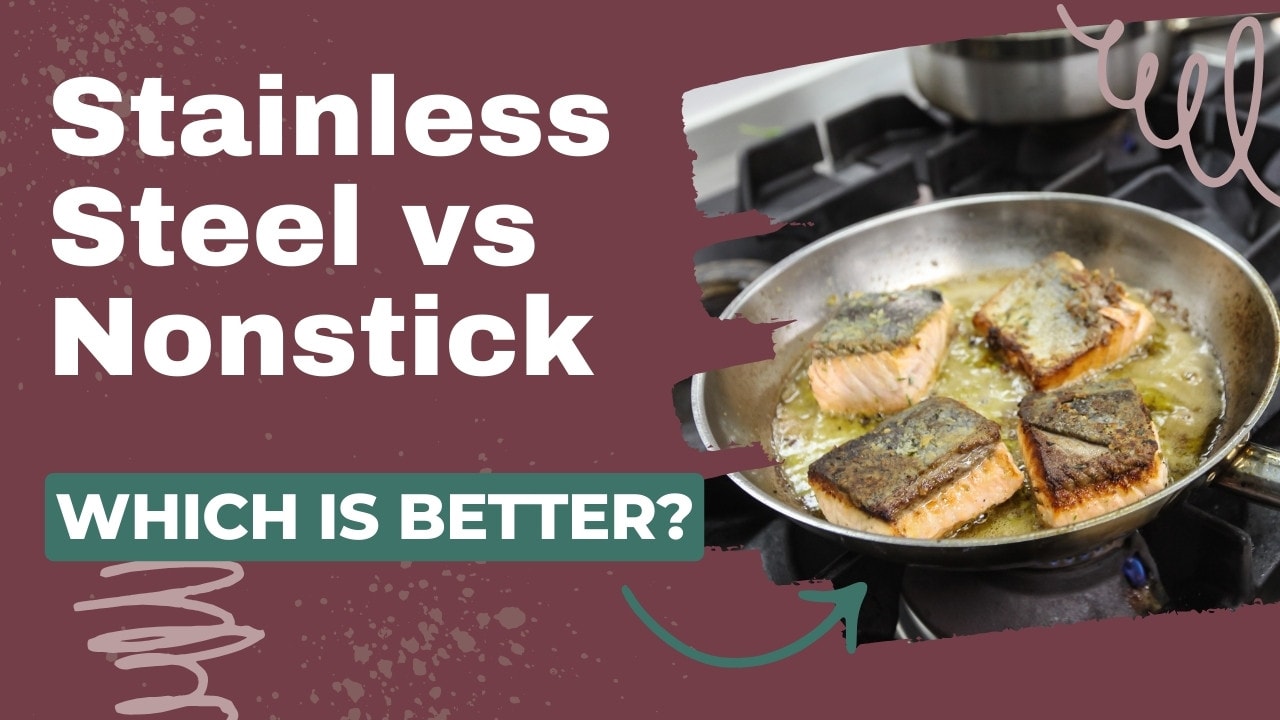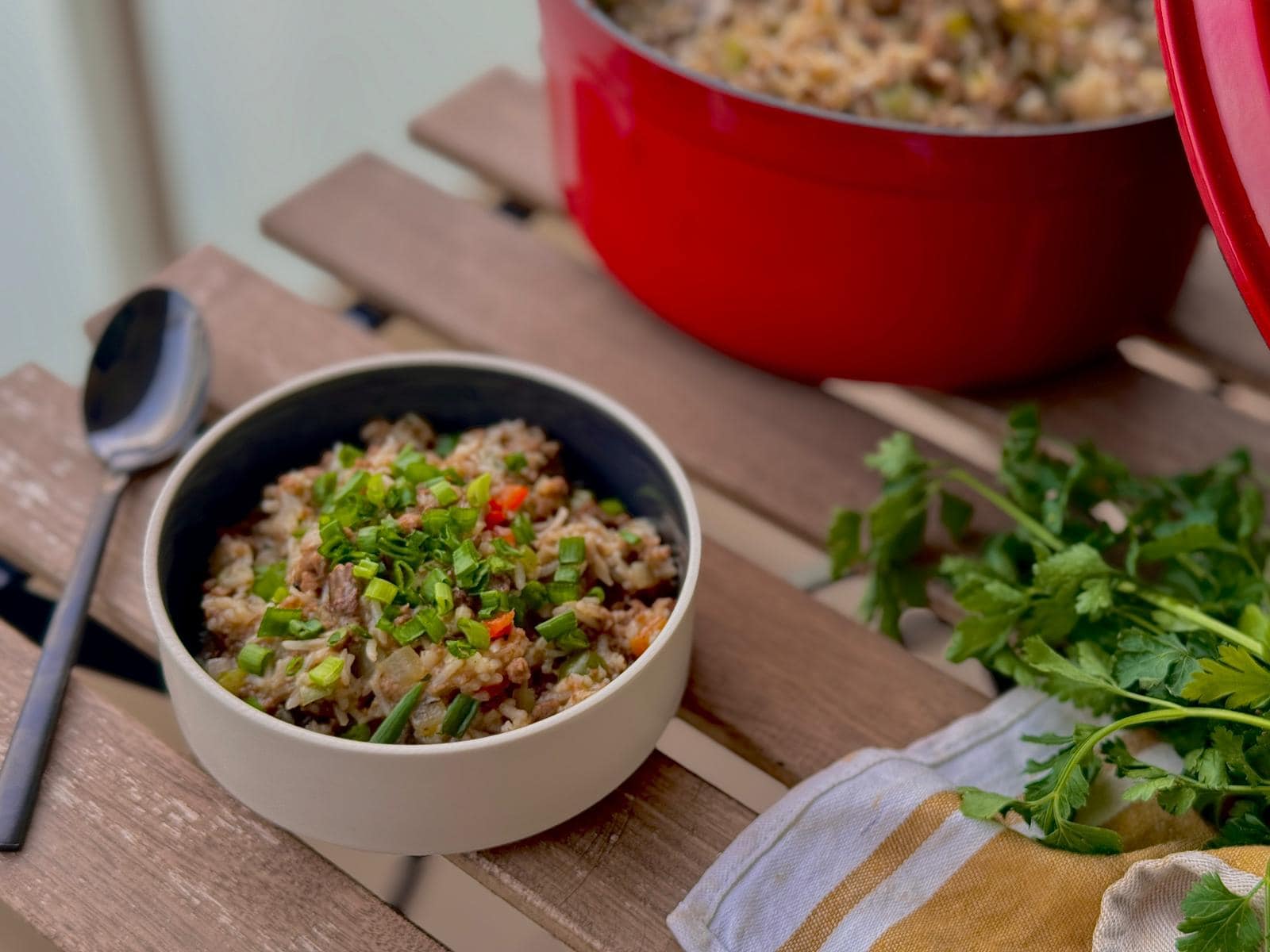Home chefs have been duking it out over stainless steel vs. nonstick pans for years. Which one reigns supreme in the kitchen? Some people swear by stainless steel, while others won’t cook on anything without an easy-release nonstick coating. So which is better and which should you spend your money on?
In my eyes, a well-equipped kitchen will have both stainless steel and nonstick pans. Each material is suited for different uses, so having these options available allows you to adapt your cookware to your dish. And – don’t worry! – there are nonstick pan options that don’t contain Teflon.
In this article, I’m going to compare stainless steel and nonstick cookware in detail so you can understand the strengths and weaknesses of both.
Comparing Stainless Steel and Nonstick Pans – Pros and Cons
| Stainless Steel Pan | Nonstick Pan |
|---|---|
| Metal utensil safe | Safer to use wooden, plastic, or silicone utensils |
| Long lifespan (often with a lifetime warranty) | Only lasts 3-5 years |
| Food is prone to sticking | Food releases easily |
| Requires more oil | Better for low-fat cooking |
| Safe at high heat | Only oven-safe to 350-400°F in the oven and on medium heat on the stove |
| Dishwasher safe | Hand wash recommended |
| Great for searing | Better for delicate foods like eggs and fish |
| Nonreactive to acidic foods | Acidic foods can affect the nonstick coating |
| Very durable | Coating can easily get damaged |
| Learning curve | Beginner friendly |
All About Nonstick Pans
The term ‘nonstick’ refers to the coating applied to a pan rather than the base material of the pan itself. Most non-stick pans are made from aluminum, and all have either a PTFE (Teflon) nonstick coating or a ceramic nonstick coating applied to the surface. These nonstick coatings are sold under a myriad of sciency-sounding names, but when you look past the clever marketing speak, ceramic and PTFE (Teflon)-coated are the only two categories of nonstick pans on the market.
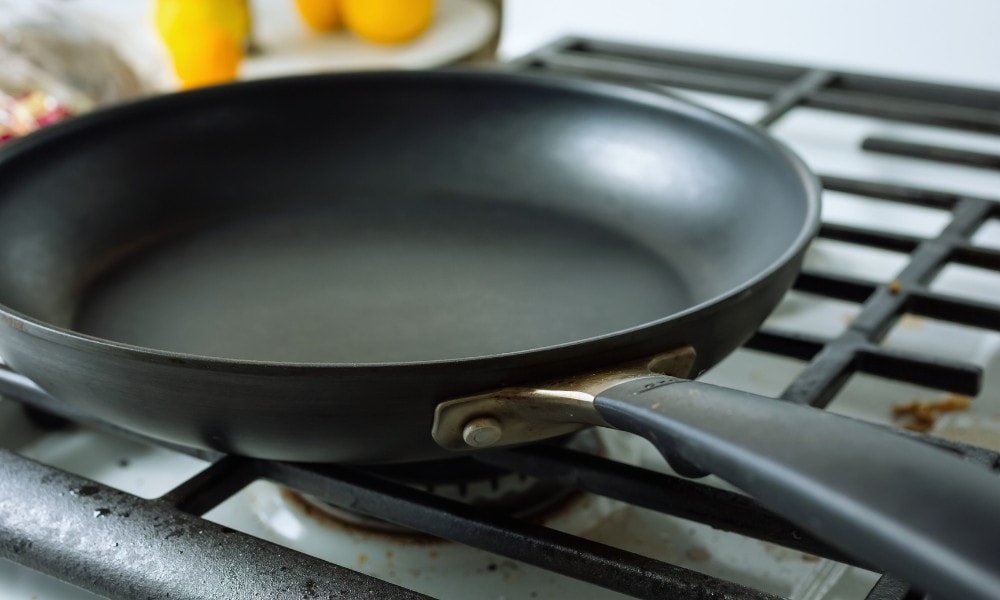
Advantages of Nonstick Pans
Obviously, the main advantage of nonstick pans is how easy the food releases. This makes cooking and cleaning up super easy. The coating means you can use little or no fat to cook with, which may be healthier in the long run.
The pans are also generally more affordable than stainless steel because they are made from aluminum. This base material heats quickly and evenly, which makes cooking a little more efficient. Since they are aluminum, nonstick pans are not induction-compatible unless they have a stainless steel base. You can tell by looking for a marking on the base or see if a magnet sticks to the bottom. If it sticks, it’s induction-compatible.
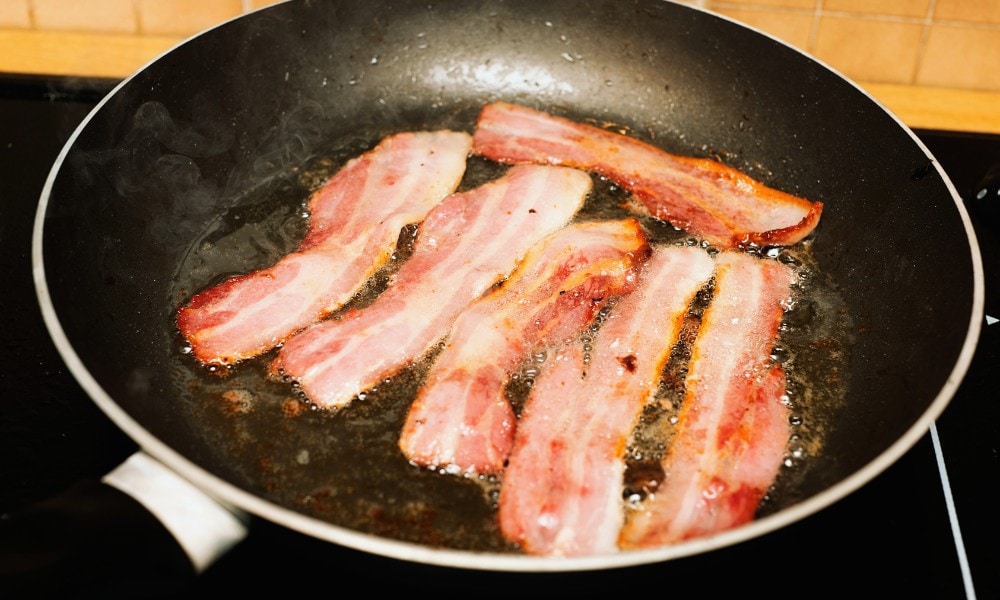
Successful cooking on a nonstick pan requires an attentive chef who won’t leave the pan on a burner unattended. Nonstick pans overheat quickly, and when they do, the coating can be damaged or even release harmful fumes.
Disadvantages of Nonstick Pans
The main downside to nonstick pans is that the coating sustains damage over time. No matter how gently you use your pan, the expanding and contracting of the metal on a heat source creates micro-tears in the nonstick coating.
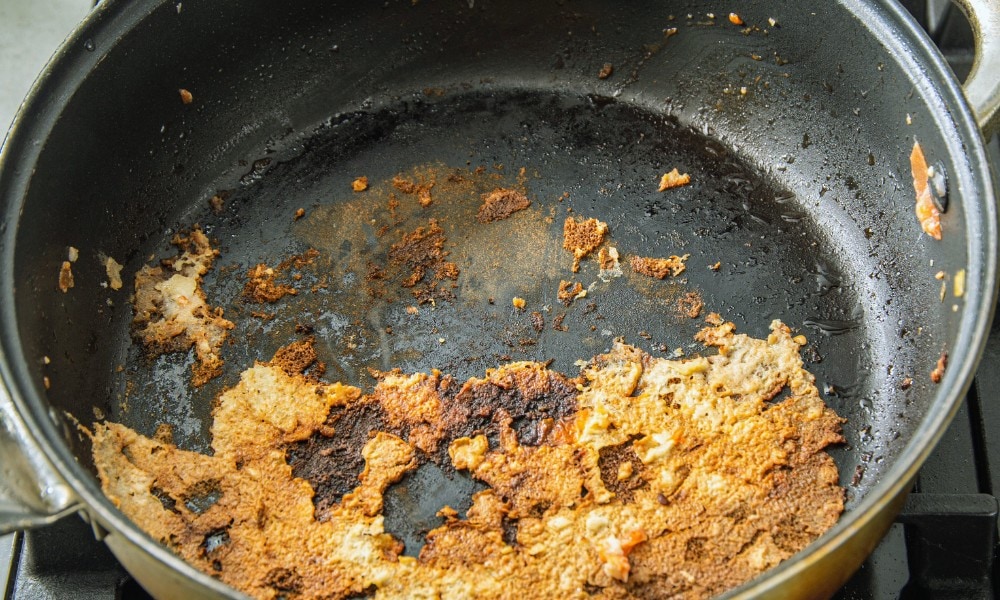
If you leave your pan heating empty on a burner unattended, it will break the coating down even faster. It also can release fumes from the Teflon breaking down, potentially causing symptoms known as polymer fume fever.
Health Concerns
Teflon pans made before 2015 may contain a chemical called PFOA which is a possible carcinogen. While PFOA is now banned by the FDA, it could sneak into cookware produced in countries not regulated by the FDA. Current manufacturers have replaced PFOA with a chemical called GenX, which may carry the same health risks. GenX is used in the creation of Teflon (or generic PTFE) then removed from the final product in the manufacturing process, but many users prefer to avoid PTFE nonstick pans altogether.
Ceramic nonstick pans are popularly regarded as safer than PTFE-coated pans, but this newer technology may have health-related drawbacks as well.
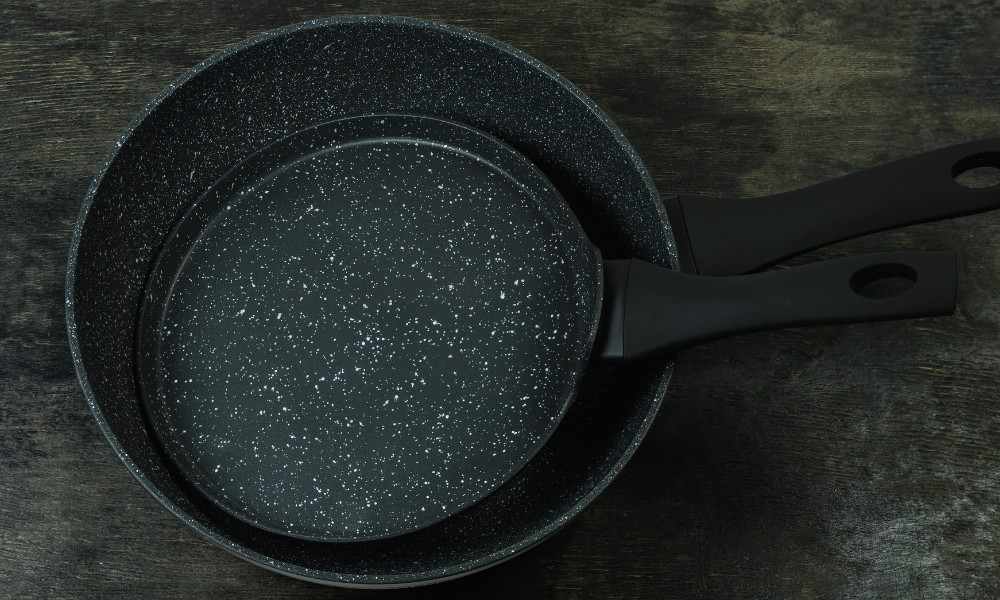
To avoid damaging, scratching, and ingesting the coating, it’s vital to use wood, silicone, or plastic utensils on nonstick pans, whether they are PTFE or ceramic. You also need to avoid putting these pans in the dishwasher as this will degrade them faster.
All these elements combined mean that even the best nonstick pans only last 3-5 years. They are not only expensive to replace, but are bad news for the environment, as these pans will end up in a landfill quickly.
What Can You Cook in a Nonstick Pan?
Nonstick pans are best for delicate foods like eggs, crepes, potatoes, and fish, cooked on medium and low heat. Anything really sticky, like battered or breaded food, is also better in nonstick.
What to Avoid With Nonstick Pans
Since searing requires high heat, I recommend avoiding doing it in nonstick pans. Both ceramic and Teflon nonstick are best used on medium-low heat, and it can reduce the pan’s lifespan if you heat it high enough to cook a steak. Avoid cooking stir fry or anything that requires frequent turning and stirring in a nonstick pan, as this will scratch the coating. I also avoid cooking acidic foods like tomato or wine-based sauces in nonstick pans, which can eat away at the coating.
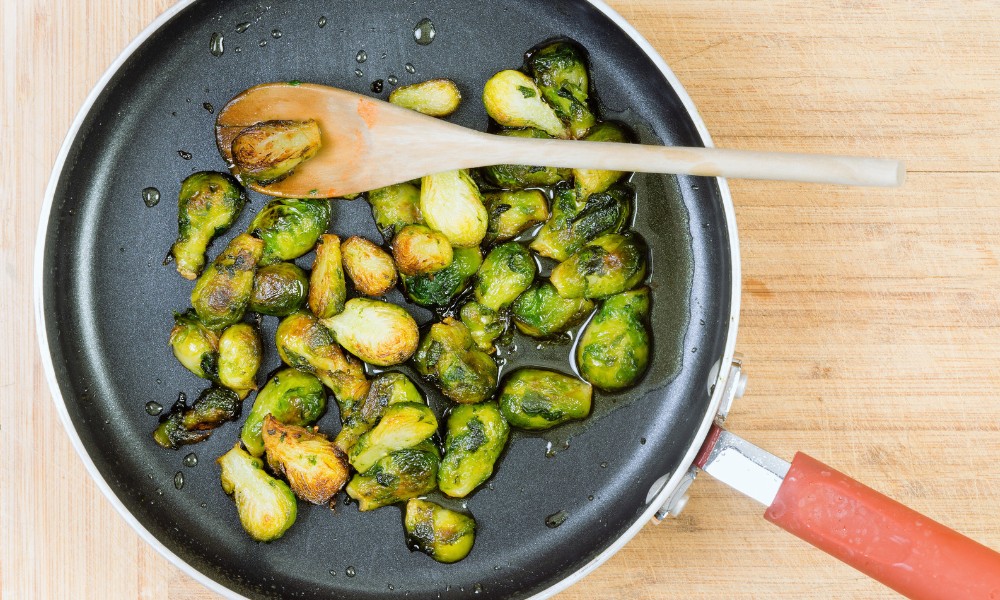
Using nonstick cooking sprays is not advisable because they can build up a hard-to-remove residue that damages the coating when you scratch it off.
All About Stainless Steel Pans
There’s a huge range of food-safe stainless steel cookware, but it all includes a bonded or clad layer of aluminum or copper to improve heat distribution. Our article on what to look for in a stainless steel pan goes into detail on the different types of stainless steel pans.
Advantages of Stainless Steel Pans
Overall, stainless steel is a very versatile material, especially when compared with nonstick pans. A stainless steel surface is very durable and nonreactive, so you can cook anything in it, no matter how acidic. They are well suited for cooking on high heat, which makes them ideal for searing a perfect steak. This versatility also means you can take your dish from the stove to the oven using one pan.
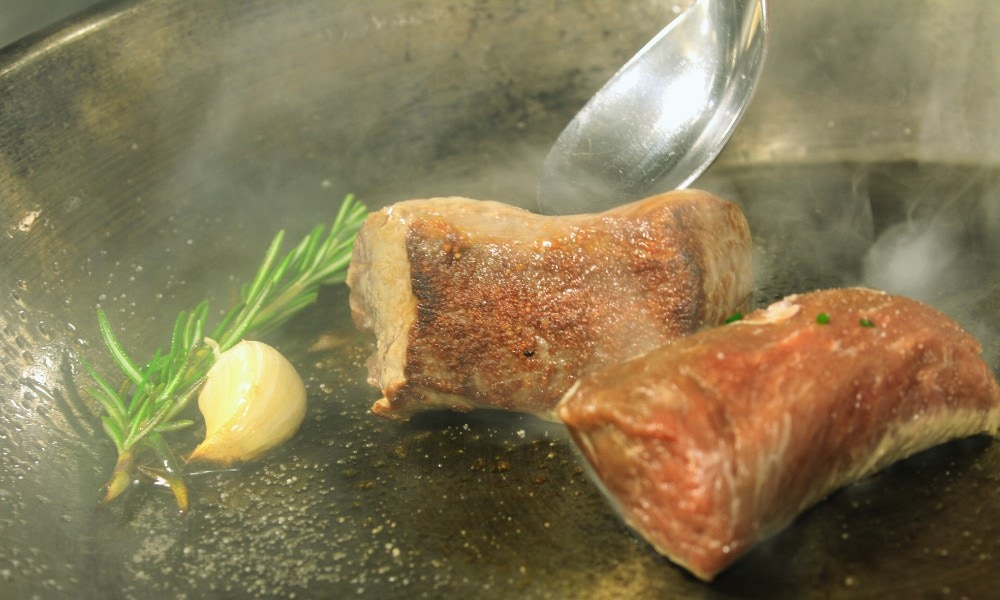
While it may not have a nonstick coating, stainless steel is still easy to clean in most cases – unless you don’t get the temperature right for eggs – because these pans are dishwasher friendly.
Disadvantages of Stainless Steel Pans
There’s no getting around the fact that stainless steel is expensive, especially compared with nonstick. But once you buy a good stainless steel pan, you’ll have it for life.
While stainless steel is very versatile once you get the hang of it, there’s a learning curve to using it. The surface can be made almost nonstick, but you have to get your pan really hot for it to work. This means delicate proteins will overcook very quickly.
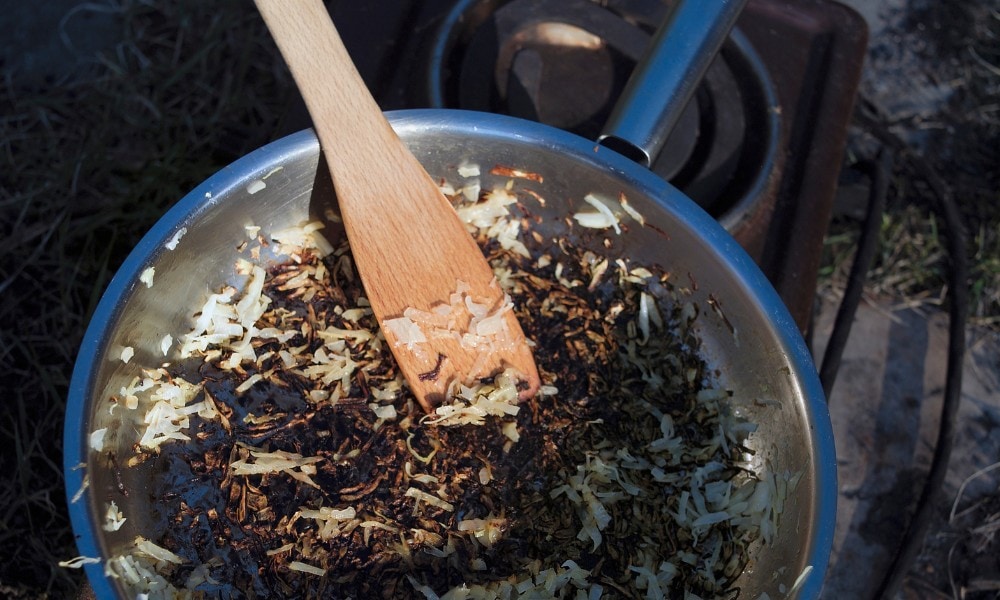
If you don’t get the temperature perfectly right, food will stick very easily. To get stuck or burned food off the pan, you’ll have to soak it in hot, soapy water and use some elbow grease before you try the dishwasher.
What Can You Cook in a Stainless Steel Pan?
As I alluded to, stainless steel is well suited for cooking acidic foods (like tomatoes) because it’s nonreactive. It’s also perfect for searing proteins at high heat. You can boil, broil, fry, and saute in stainless steel. It’s so versatile there’s almost nothing it can’t handle.
What to Avoid With Stainless Steel Pans?
The only foods I avoid cooking in stainless steel are sticky foods and delicate proteins. I’ve made the mistake of trying to cook fish or tofu in stainless steel pans, and they just fell apart! Now I reach for my ceramic nonstick skillet for these types of foods.
Just like with nonstick pans, I suggest avoiding cooking sprays with stainless steel, because they leave behind a gummy residue that is hard to get off, even with soaking.
When it comes to cleaning, avoid using caustic or abrasive cleaners that can damage the surface of your stainless steel pan and lead to pitting.
Are Stainless Steel or Nonstick Pans Healthier to Cook With?
As we discussed above, nonstick pans, especially PTFE ones, have a few health concerns associated with them. If the pans are left to heat empty, they could release harmful fumes. On ceramic pans, the coating can also scratch and break down, potentially releasing nanoparticles into your food.
Stainless steel, however, is considered one of the safest materials to cook in by almost every expert. Stainless steel has a nonreactive surface that is resistant to scratching. While they may release some nickel and chromium into your food, these levels are deemed safe by the FDA.
That said, if you have a nickel allergy, you may prefer to use a nonstick pan, since they won’t leach nickel into your food, or opt for nickel-free stainless steel.
Which Lasts Longer – Stainless Steel or Nonstick Pans?
High-quality stainless steel pans can last a lifetime if you take care of them; you can even pass them down to the next generation. Nonstick pans, on the other hand, only last 3-5 years because the nonstick coating will eventually break down.
Can you use Stainless Steel or Nonstick Pans on Induction Cooktops?
Most stainless steel cookware has a magnetic, nickel-free exterior that makes it induction-compatible, but you should check the product information to make sure. Nickel-free stainless steel is known as 18/0, so if you see a product with an 18/0 exterior, you know it should be induction-compatible.
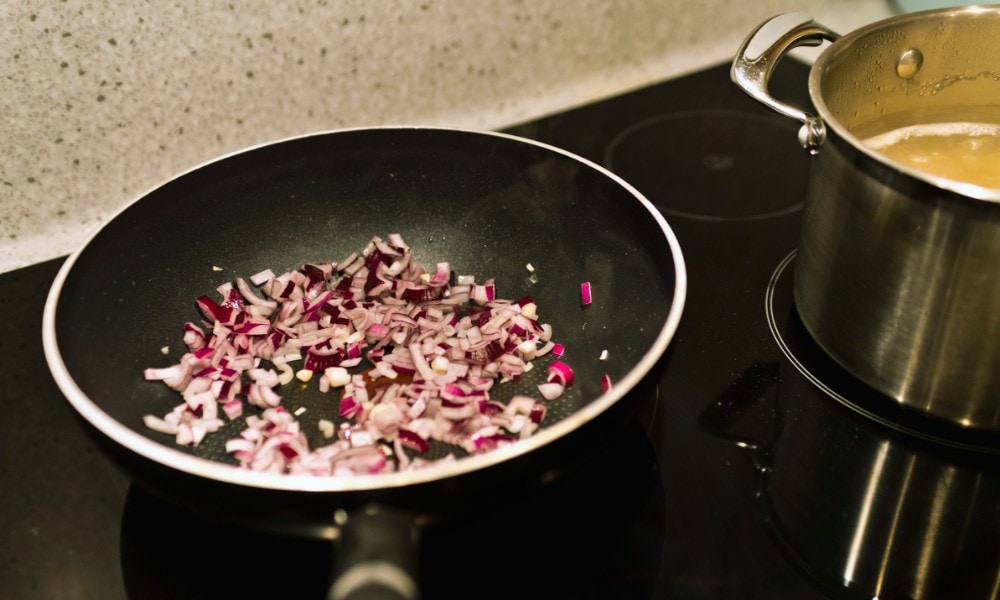
Aluminum nonstick pans are not induction-compatible unless they have a ring of stainless steel set into the base. The best way to tell if a pan is induction-compatible is to read the packaging – or test it yourself and see if a magnet sticks to the bottom.
Conclusion
Ultimately, both stainless steel and nonstick pans have a place in a well-rounded kitchen. Having them both available to you means you’ll always have the perfect pan for whatever you’re cooking.
Still conflicted? Feel free to comment, and we can help you answer any questions you may have.

